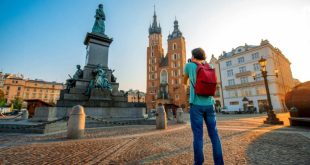As climate change becomes a danger to humanity, a new report shows that there is a correlation between climate change and voluntary migration.
A report from the Rights Lab, in partnership with the Catholic Agency for Overseas Development (CAFOD), Caritas Bangladesh, OKUP, and Caritas India, is adding evidence to the link between climate change, migration, and human trafficking.
The report focuses on the southwest border region of Bangladesh and India, close to the Sundarbans mangrove forest, which has some of the most vulnerable districts to climate change in the world.
The report contains findings from the largest-ever household study in the region, with over 1,200 households, providing evidence for the inextricable connection between climate change, migration, and human trafficking.
The report found that over 88 percent of households in Bangladesh and 61 percent in India reported that their livelihoods have been affected by climate change and over a third of households had migrated in the past five years. In addition to the risks to livelihoods, there were also cases of recruitment payments and debt bondage.
Climate change gives rise to migration on a large, global scale. The United Nations High Commissioner for Refugees (UNHCR) estimates that an average of 20 million people are forcibly displaced to other areas in countries all over the world by weather-related events every year. Climate-related disasters disproportionately affect marginalized populations, who are often facing other structural challenges in climate-vulnerable regions and countries. As a result, climate-related disasters are often described as a threat multiplier that compounds crises over time and space. The 2021 White House Report on the Impact of Climate Change on Migration underscored the multifaceted impacts of climate change and climate-related migration, ranging from destabilizing vulnerable and marginalized communities and exacerbating resource scarcity to igniting political tension.
Few existing international frameworks and regional and domestic legal regimes provide adequate protection to climate migrants. However, as the UN Dispatch noted, “people who have been uprooted because of climate change exist all over the world — even if the international community has been slow to recognize them as such.” As a result, climate migration has been described as “the world’s silent crisis,” contrasting its global pervasiveness with its lack of recognition and investigation.
The number of people displaced by climate-related disasters is forecast to top 200 million by 2050. The World Bank projects that there will be 216 million climate migrants by 2050. The Institute for Economics and Peace (IEP) projects there will be 1.2 billion climate migrants by 2050. The UN International Organization for Migration projects that there will be 1.4 billion climate migrants by 2060.
According to the Internal Displacement Monitoring Centre, more than 42 million people were displaced in Asia and the Pacific triggered by the sudden onset of natural hazards during 2010 and 2011, more than twice the population of Sri Lanka. This figure includes those displaced by storms, floods, and heat and cold waves. Still others were displaced by drought and sea-level rise. Most of those compelled to leave their homes eventually returned when conditions improved, but an undetermined number became migrants, usually within their country, but also across national borders.
California is confronting a growing forest and wildlife crisis due to wildfire. California has historically been vulnerable to wildfires – at least a third of the worst wildfires in US history have occurred in California. However, climate change – specifically, warmer temperatures and more intense drought seasons – in recent years has dramatically increased the size and intensity of wildfires in the state. More than half of the 20 largest California wildfires in modern history occurred between 2018 and 2022. The 2020 wildfires were particularly devastating, burning down more than 4 million acres of land, destroying thousands of buildings, and forcing hundreds of thousands of people to leave their homes.
Evidence suggests that only a small percentage of those affected by wildfires choose to stay. Only several thousand of the 27,000 residents affected by the 2018 Sierra Nevada fire chose to remain and rebuild.






